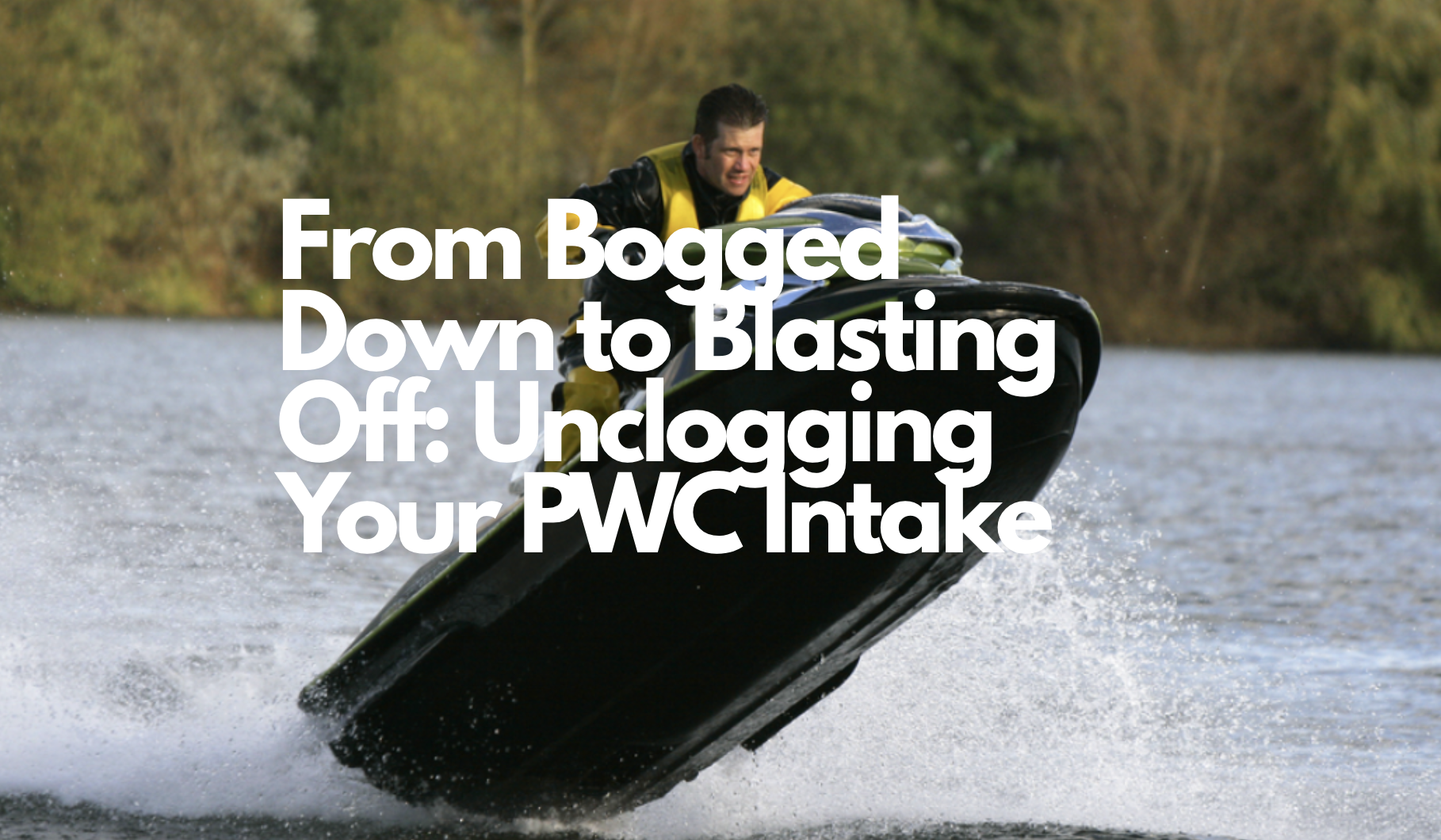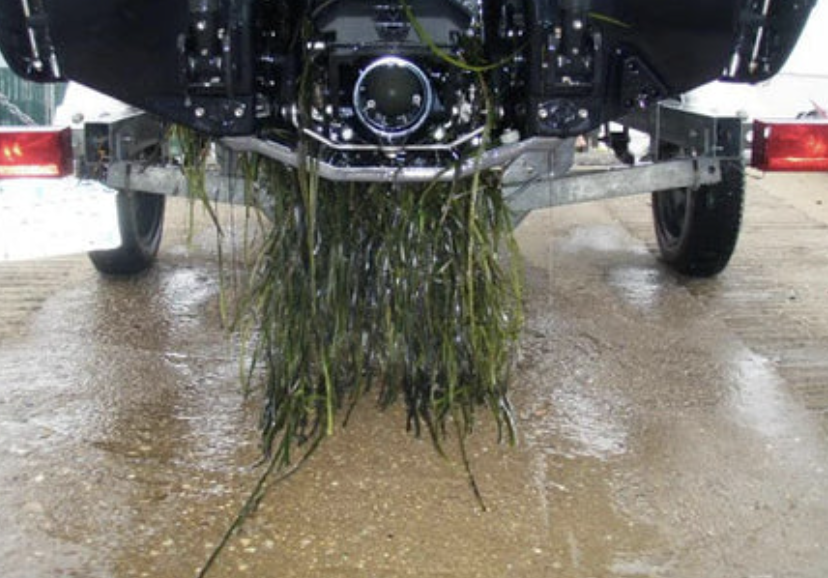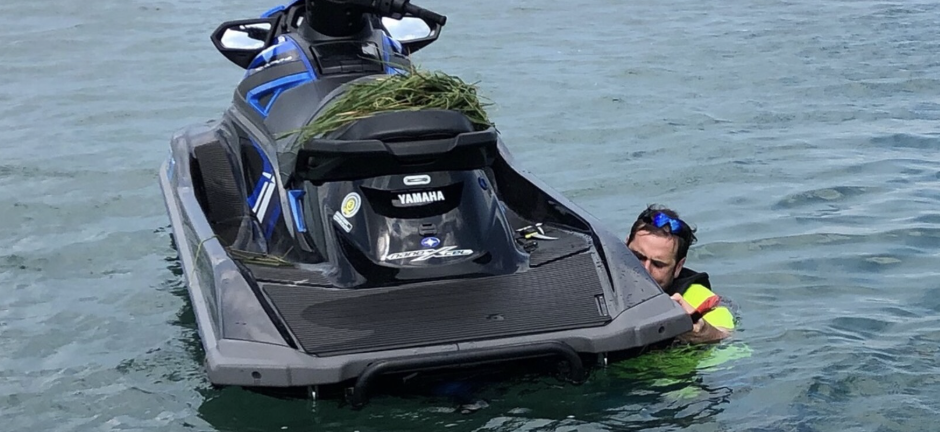
If you’ve owned a personal watercraft (PWC) for any amount of time, chances are you’ve dealt with one of the most frustrating interruptions to a perfect lake day: weeds clogging the intake. Whether it’s long strands of milfoil, floating clumps of hydrilla, or the occasional plastic bag that sneaks into the water, your machine simply can’t perform when the intake grate is blocked. Acceleration drops, steering becomes sloppy, and sometimes the engine even shuts down to prevent damage.
Fortunately, getting weeds unstuck is usually quick and straightforward if you know what to do. In this post, we’ll walk through the easiest method, why it works, what not to do, and a few tips to prevent future clogs. By the end, you’ll feel confident handling intake blockages so you can get back to carving turns and enjoying the water.
Why Weed Clogs Happen
PWCs are jet-propelled machines. Instead of a propeller like a traditional boat, they suck water through an intake grate on the bottom, accelerate it through an impeller, and push it out the back nozzle. It is an incredibly efficient system unless you happen to drive over a patch of weeds.
Because the intake is a powerful vacuum, anything loose in the water column can get sucked in. Long weeds wrap around the driveshaft or wedge themselves across the grate, and in severe cases they ball up inside the impeller housing. The result? You’ll feel the PWC lose thrust, vibrate, or handle sluggishly.

The Easiest Way: The “Reverse Blast” Method
The simplest and fastest way to clear weeds from your PWC intake doesn’t even require tools. It just takes a bit of technique and patience. It is often called the reverse blast or burp method.
Step 1: Stop the Engine
As soon as you notice vibration, cavitation (that “revving but no speed” feeling), or sluggish performance, release the throttle and shut off the engine. Running at full power with weeds jammed in the system can overheat the engine or damage the wear ring and impeller.
Step 2: Shift to Reverse (or Backflush)
Most modern PWCs, including Sea-Doo, Yamaha, and Kawasaki, have reverse capabilities. Restart the engine and gently engage reverse. A short burst in reverse often pushes water out of the grate and dislodges the weeds.
Tip: Use quick, controlled pulses instead of holding full reverse. This creates turbulence that shakes debris free.
If your PWC has an “intake clear” or “weedless” system such as Sea-Doo iBR or Yamaha’s clean-out port, activate it now. These features were designed exactly for this purpose.
Step 3: Alternate Forward and Reverse
If one blast doesn’t work, alternate between forward and reverse, giving short squeezes of the throttle. The change in water direction helps untangle weeds from the impeller and grate.
Step 4: Idle to a Weed-Free Zone
Once you feel thrust return, slowly idle away from the area. Do not hammer the throttle until you’re sure the intake is clear.
When Reverse Doesn’t Work
Sometimes weeds are stubborn. In that case, you’ll need to get hands-on. Here’s the safe way to do it:
- Beach or Anchor Safely
- Move your PWC to shallow, calm water away from boat traffic. Shut off the engine and remove the safety lanyard to ensure no accidental start-up.
- Check the Intake Grate
- Reach under the hull and feel the intake grate. Pull out any visible weeds by hand. Be careful not to cut yourself on sharp edges or get fingers caught between bars.
- Use a Clean-Out Tool
- If the weeds are wedged too tightly to grab, a clean-out tool can make the job much easier. These tools are long rods or hooks made from durable plastic or fiberglass, non-metallic so they will not damage the impeller or grate. Insert the tool through the rear clean-out port (if your model has one) or up through the grate when the craft is out of the water. Twist or hook the weeds until they come free, then pull them out by hand. Having one stored in your compartment can save your ride when a clog is especially stubborn.
- Clear the Clean-Out Port (if equipped)
- Many PWCs, especially Yamahas, have a rear clean-out port. Open it, reach in (or use your tool), and remove weeds or debris from the impeller area. Always keep the engine off while doing this.
- Roll the PWC (in an Emergency)
- If you’re stuck in open water and can’t reach shore, you can sometimes roll the PWC on its side to let the weeds fall away. Check your owner’s manual first since manufacturers specify which direction is safe to roll without flooding the engine.

What Not to Do
Do not rev the engine at full throttle. This only packs the weeds in tighter and can score the impeller or wear ring.
Do not stick metal tools up the intake grate while afloat. It is unsafe and risks damaging internal parts.
Do not ignore it. Running with a clogged intake reduces cooling flow and can quickly lead to overheating.
Prevention Tips
While weed clogs are sometimes unavoidable, a few habits can reduce how often they happen.
Scout the Water Ahead
Shallow coves and the edges of lakes are notorious weed zones. Stay clear of heavy vegetation, especially in late summer when growth peaks.
Accelerate Before Weed Beds
If you must cross a patch of floating weeds, accelerate to glide over them instead of sucking them in at idle.
Trim the Nose Up
Raising the bow slightly reduces how deeply the intake pulls from the water, helping avoid submerged weeds.
Use the Weedless System
If your PWC has a built-in weedless feature, make activating it part of your regular riding habits.
Inspect After Each Ride
A quick check of the intake grate when you beach the PWC saves headaches on your next outing.

When to Seek Professional Help
Most clogs are simple to fix, but if you repeatedly get weeds stuck or notice persistent vibration even after clearing, it may be time for a dealer inspection. Common issues include:
- A damaged wear ring from running clogged too long.
- Bent or chipped impeller blades.
- Debris lodged deep inside the pump housing.
These repairs are relatively straightforward but require special tools. A professional can restore your PWC’s performance and prevent long-term damage.
Final Thoughts
Weeds in the intake are part of PWC life, but they don’t have to ruin your day. By stopping the engine quickly, using the reverse blast method, and turning to a clean-out tool or manual clearing when necessary, you can usually fix the problem in minutes. Add in some prevention habits, and you’ll spend far less time floating with the seat up and far more time enjoying the open water.
The easiest way to get weeds unstuck is to let water and the right tool do the work for you. Next time your PWC bogs down in a weedy stretch, you’ll know exactly what to do to get back to full throttle fun, at your lakefront home.
Posted by Scott Freerksen “The Lake Guy”
